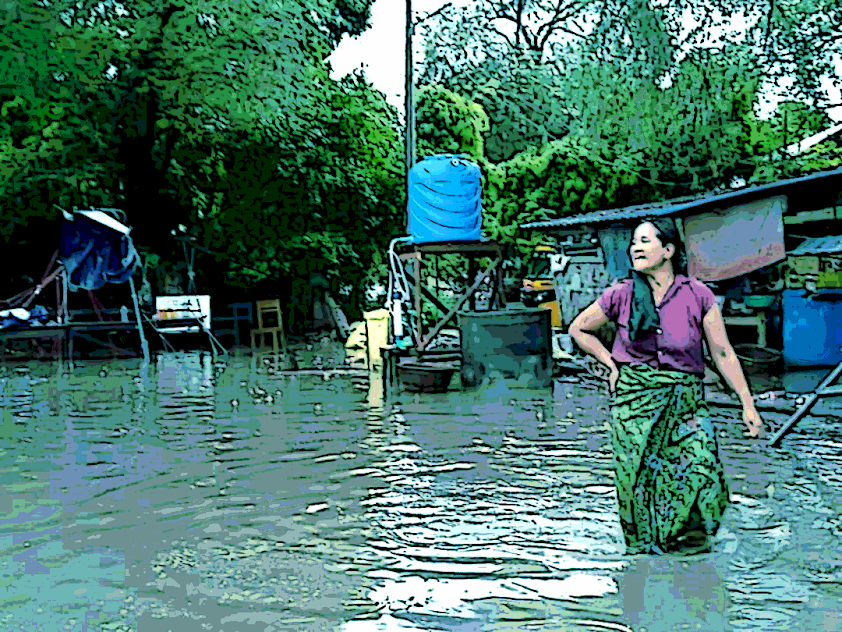“Myanmar Spring Chronicle – April 15 Overview”
published by MoeMaKa on April 16, 2025:
🌊 A Thingyan, Unlike the Traditional One
This year’s Myanmar New Year Water Festival (Thingyan), traditionally held from April 12 or 13 for four days of celebration, has taken on a drastically different meaning for many. While some regions are caught in the violence of civil war, others continue to suffer deeply from the aftermath of the March 28 earthquake — leading to vastly different experiences and perspectives during what is usually a joyful national holiday.
The March 28 earthquake struck Mandalay, Sagaing, Pyinmana, Naypyitaw, and other regions, with official figures reporting over 3,700 deaths and hundreds of injuries and missing persons.
Mandalay — often seen as the cultural heart of Myanmar and of Thingyan — was one of the hardest-hit cities, suffering massive destruction and loss of life. As a result, residents have observed the festival quietly, foregoing traditional celebrations.
📉 Thingyan in Crisis: A Timeline of Disruption
-
In 2020, COVID-19 forced a scaled-down Thingyan.
-
In 2021, the military coup led to violent crackdowns on protesters during Thingyan week — turning the holiday into a time of mourning.
-
From 2021 to 2024, the junta tried to revive the festival to show normalcy, even encouraging public participation.
-
Resistance movements, on the other hand, urged people to boycott junta-led celebrations.
Although the COVID threat has since waned, Thingyan in major cities has never fully returned to its pre-coup vibrancy. In places like Yangon, celebrations are no longer publicly open but instead held in private, gated areas. Participating in high-profile events now carries social and political risk.
In Yangon this year:
-
No major public pavilions (mandats) were set up.
-
Celebrations were minimal in public places, including typically festive streets like 19th Street in Chinatown, City Hall Road, Kabar Aye Pagoda Road, and University Avenue.
-
Only after Thingyan’s second day did the Yangon Mayor and City Development Committee announce a “walking Thingyan” in central Yangon — likely an attempt to boost morale.
💬 Divided Perspectives
Some believe that Thingyan should remain a time for joy and emotional relief, especially for a population mentally drained by war and economic hardship. Others see celebration during such times as inappropriate or politically insensitive.
🔥 In Conflict Zones: No Pause for Thingyan
In active war zones, Thingyan has no presence. Military airstrikes, shelling, and village burnings continue:
-
Earthquake survivors are still sleeping in open fields.
-
Fighting to seize Bhamo in Kachin State has not stopped.
-
Just days before Thingyan, Indaw Town in Sagaing fell to resistance forces, followed by junta airstrikes killing many civilians.
-
Ongoing battles are reported in Naungcho, Thabeikkyin (Mandalay), Myingyan, and Taungtha.
-
In Karen State, airstrikes also continue.
📍 Two Worlds, One Country
Across Myanmar, the contrast is stark:
-
Some cities observe Thingyan in silence due to grief and destruction.
-
Others are too engulfed in war to celebrate at all.
-
Some areas have tried to reclaim the festival’s spirit — though often behind closed doors.
Meanwhile, Myanmar diaspora communities abroad continue to celebrate Thingyan in their own ways:
-
As cultural gatherings 🥁
-
As fundraisers 💸
-
As reunions for communities scattered by displacement 🕊️
But the festive mood overseas contrasts sharply with the gloom cast by civil war and disaster at home.

